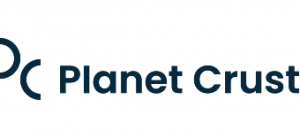Cork, Ireland, 6 April 2021.
Crust Technology, the driving force behind the open-source low-code platform Corteza, is excited to announce a new major release: Corteza 2021.3. The highlights of this release are a visual drag-and-drop workflow editor, a new UI, a template editor and authentication improvement.

New features and improvement in Corteza 2021.3
Corteza Workflow
The new workflow editor enables users to automate simple and complex processes, without the need for programming knowledge. It’s based on BPMN 2.0 standards, and easy and fast to use. Simply drag and drop the elements you need on the canvas, configure and connect them. Main features include:
- Unlimited workflows anywhere in Corteza
- Drag-and-drop editor
- Zoom in, zoom out and move the canvas
- Single or multiple start points (triggers)
- On create, update or delete
- On a manual interaction (a click on a button, such as “Covert this lead”)
- On a scheduled interval (for example, every day at 1 am)
- On a set date and time (you can define multiple “timestamps” for the same trigger)
- Expressions (interact with values in your workflow. For example: calculate the grand total of a quote)
- Functions (list of predefined functions, such as find records create a new record, find a template, send an email etc)
- Iterators (loop through a list of records)
- Error-handling
- Gateways (check a value and continue with the workflow in the desired path)
- Delay (pause the workflow at a certain point for a set time)
- User interactions:
- Alerts (for example, a confirmation message on the screen)
- Choice prompt (select one of the two buttons. For example, yes and no)
- Single input (ask the user for a value that the user can type in)
- Option select (ask the user to select a value from a list)
- Testing and debugging tools
Extensive documentation on workflows has been created, explaining each feature in great detail. This documentation also provides useful examples.

New UI
In collaboration with experts from the Dutch Accessibility Foundation, significant changes have been made to the UI. The fully responsive design follows the WCAG standard compliance (World Content Accessibility Guidelines), which makes Crust the leading innovator in accessibility in the Low-Code sector.

Template Editor
The new template editor allows you to define the generic document structure (such as a welcome email message or a quote PDF), which is then converted into an actual document based on the provided data. Templates are written in HTML and allow placeholders, functions and conditional rendering. After creating templates they can be rendered in Corteza workflow.

Authentication
This release comes with an OAuth2 server with Authorization code and client credentials flows. All authentication interfaces used by Corteza can now fully be modified and styled to your needs. Personalization is performed by defining a series of templates and assets (e.g. images and JavaScript code). This allows you to make the authentication screen match the company style guide.

Messaging Changes
Support for a Matrix-based federated messaging solution will be provided as of Corteza version 2021.6. The goal is to align with Corteza Record Federation, ensuring that using organisations can create richer, federated relationships, not limited to static records only. In preparation for this, the legacy Corteza Messaging solution has now been deprecated.
Other changes
- Upgraded to Go 1.16
- Removed obsolete asset embedding and move to //go:embed
- Messaging code and endpoints removed
- OAuth2 server with Authorization code and client credentials flows
- Compose record federation now supports Activity Stream protocol
- Codebase cleanup and removed
With(ctx) anti-pattern
- Added Envoy file encoders (export support)
- Fixed UserBeforeUpdate/UserBeforeDelete
- Auth web application is now deprecated
View the full changelog.
How to install Corteza
You can follow the local setup instructions for a local development or demonstration instance of Corteza. If you are looking for setting up a live deployment, check out the extensive production setup instructions. If you have questions, you can engage with other community members on the Corteza forum.
How to upgrade your Corteza instance
To upgrade your instance to the latest version of Corteza, please check out our Upgrade Guide.
Online demo
Crust Technology has an online demo available of this latest release. In it, you can try out the Low-Code platform, build your own apps, try out the existing apps (such as the CRM or Service Solution) and much more.
Screenshots













































































